Publisher: Victory Point Games
Designer: Hans von Stockhausen
Artist: Tim Allen
Year: 2010
Players: 1
Ages: 14+
Genre: Solitaire American Civil War game
The Lost Cause is a solitaire Civil War game where the player takes on the role of Jefferson Davis in defending the south from the invading north. It is one of the State of Siege line from Victory Point so you pretty much know from the get go that the assault will be relentless. The game comes with two maps, one for the basic game and one for the advanced game. Both are 11×17, full color and depict the states and key cities of the Confederacy split into three theaters of war. There are event cards for each year of the Civil War that are shuffled randomly by year. So you take the 1861 deck, shuffle it, and that is your starting deck of event cards. Each card represents one month of the war. The advanced game adds several more event cards and allows the game to go into 1865. In the basic game it is over at the end of 1864.
There are two sets of rules, one for basic and one for advanced. They are not overly complicated but here is where one of the problems that I had with the game came into play. They are numbered in the standard wargame fashion, 1.1.1, 1.1.2 etc. But the advance rules simply add or replace rules from the basic game. So for example the advance rules may say “Replace rule 6.1 with this rule” So I had to keep both sets of rules handy and was constantly having to go from one to the other to figure out what I was supposed to do in the advanced game, which I found annoying.
There are tokens for the various Union and Rebel generals, for the Union Armies, for Rebel resources, and for the various tracks on the game board. There are several extensive examples of play that were great to have. Finally, there is a tiny die that is pretty neat.
The object of the game is survival. You need to hold off the invading armies long enough to either have Lincoln 
After setting up the board and cards, which actually is pretty quick, you are ready to start the game. Basically, each turn you flip over an event card and follow the instructions on it. The cards are well done and each feature a headline with some flavor text, which is a nice touch, representing an actual headline during that year of the war.
The Federal actions occur first, these are represented by different icons and text that instructs the player how to move the federal forces. In general, you will be told to give a particular army or several armies an order, following the list of orders in the rules. So Army X will either remove a disruption, eliminate a gunboat, combat an ironclad, siege the confederate fortifications, establish an advance base, or advance one city down their track on the map. Each Union army has a specific track they follow through the cities in the south, with their goal being to capture and control key Confederate cities such as Richmond, or Atlanta, or Vicksburg. In the advance game, they can build an advance base once they capture a key city, so they no longer can be forced back from this new front line.
Other federal actions include moving or replacing generals, building up the naval blockade, or introducing new armies to the map.
One interesting feature is that some actions are conditional, which means that they only occur if they succeed in a die roll against the army’s initiative number listed on their token. This is further modified by any modifications listed for the specific union general assigned to that theater.
Next come the Confederate actions. Many give you no choice, you must do this or that. You must attack this army, you must do a morale test. Some actions also give you options or a choice as to whether to attack and who, or perform a naval action, or place a resource, or try to earn European Recognition. European recognition is important, because once you move the token up to the 5 or 6 box on the track you get military aid and morale bonuses. This is very hard to do however, because you need to roll higher than the current number on one die. So if the track is at 4, you have to roll a 5 or 6 to advance the track. This costs you an action each time, so you cant afford to do it too often. Additionally, once Lincoln issues the emancipation proclamation, you get a -2 modifier to your roll, although a rolled 6 is always a success.
There are no confederate armies on the map. You can attack any advancing army depending upon your available actions on the event card. The confederate actions can also be conditional, and you need to roll against either your general’s initiative value or your military advisor’s initiative depending upon the action you are performing.
Attacking is fairly simple, you simply roll a die against the attack value of the army you are attacking. Again, there can be several modifiers to this roll as well. If you succeed, you get to move the invading army back one space, giving you a little more breathing room.
You continue drawing new event cards and playing them until you work your way through the year. As Union troops capture key cities, your morale goes down. Once they capture them all you are done, it’s over. Zero Confederate morale means you lose. Finally, there is a year end sequence where you shuffle the deck for the next year and perform several other actions, then you begin again with the new year. This sequence is repeated until you run out of cards in 1865, if you last that long.
The game is aptly titled. So far I have been soundly stomped, and I have to admit that when the end finally came I was happy. I was glad it was over. I spent all this time getting my butt kicked and when my morale finally hit zero I was relieved. That’s how hopeless the game seemed. Heck, maybe that is accurate, maybe they were glad when it finally ended. But I have to admit, that each time I lost, I started setting up the game for another go.
The game is well done and very challenging. If you want a good challenge and you like Civil War games, then this is a game you should really consider. I am determined to beat this game and look forward to raising my arms in victory and screaming a rebel yell when it finally happens.
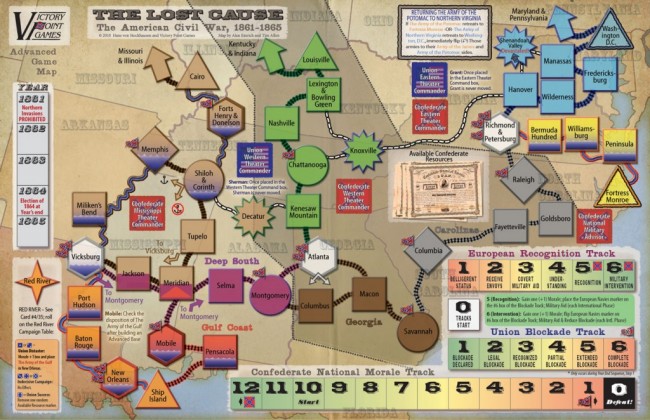
[rwp-review id=”0″]
- A Dungeon Delve for Kids?: A Review of Dungeon! - Oct 24, 2022
- Better, Stronger, Faster | Descent: Journeys in the Dark Second Edition Reviewed - Oct 23, 2022
- Your Planet is Doomed!: Invasion from Outer Space Reviewed - Oct 22, 2022


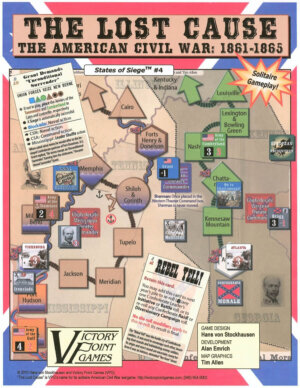

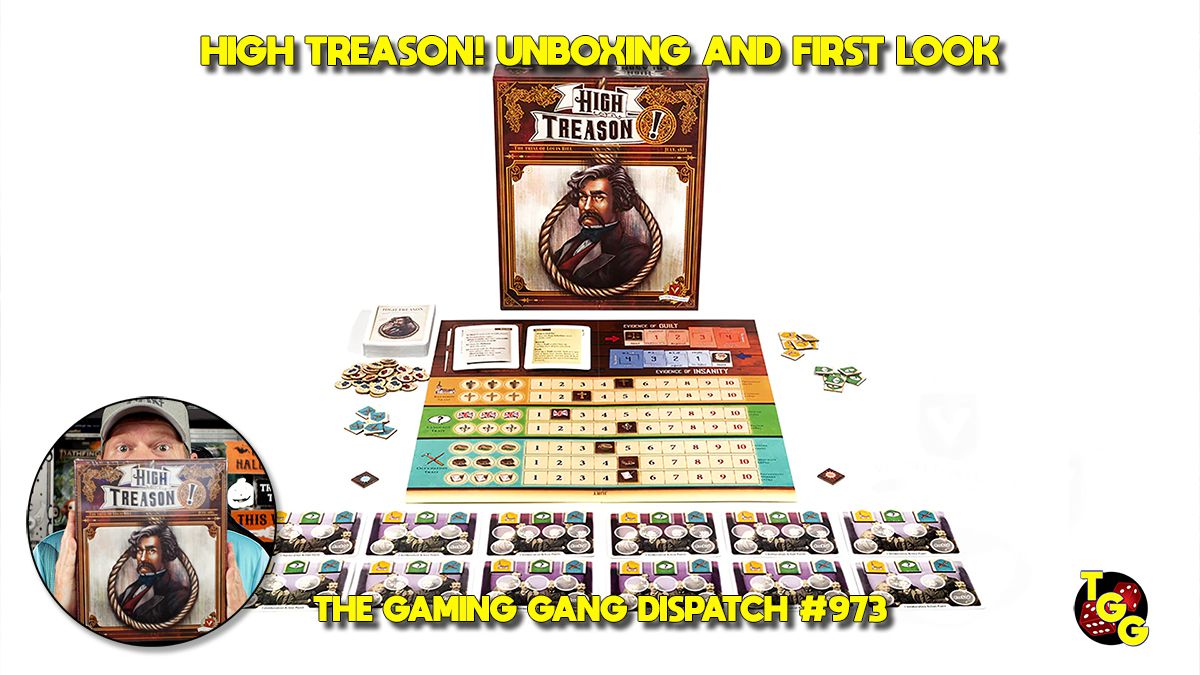
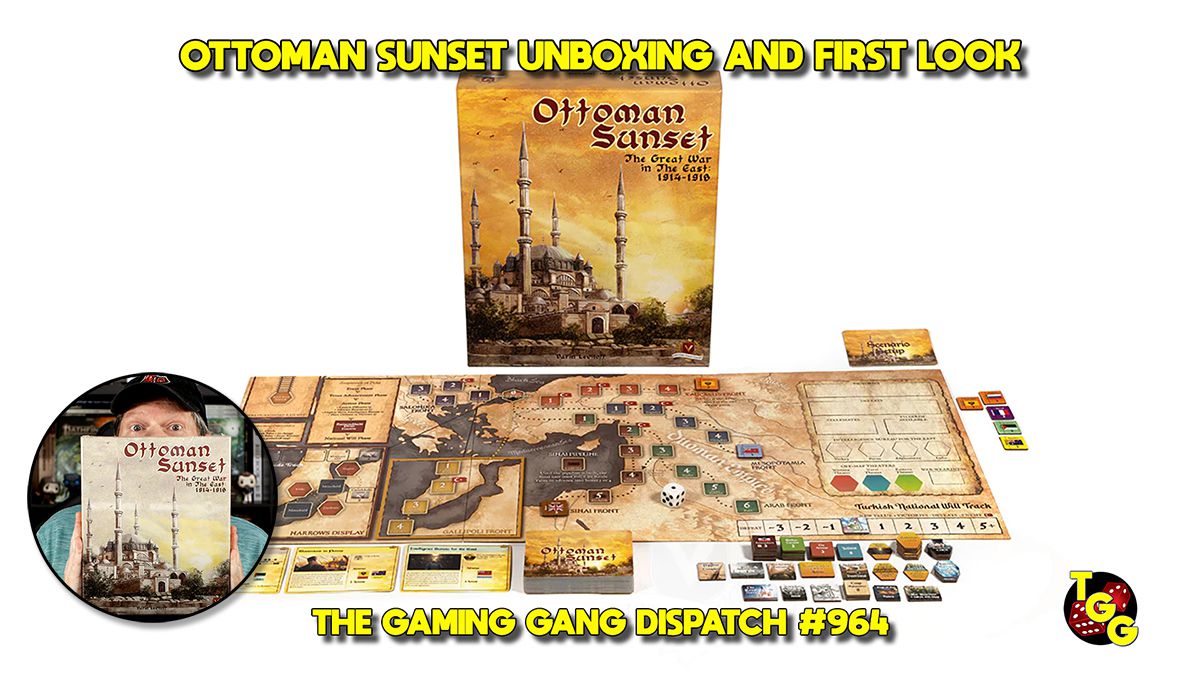




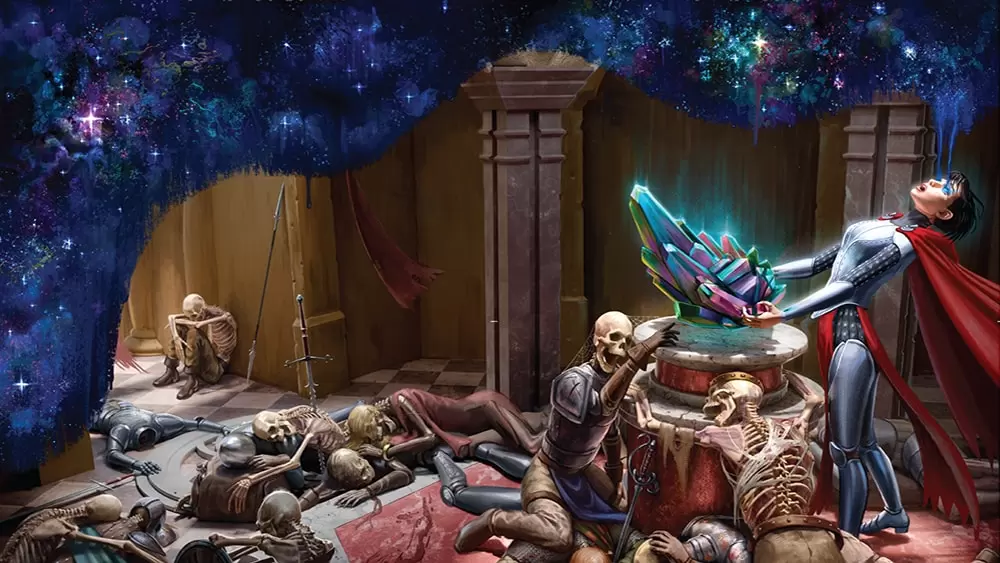






Hi Elliot,
Thanks for your review of the game. To address your main complaint about the rules there is available for download on the Lost Cause page at the VPG site a set of combined rules. As for difficulty well… it was like all States of Siege games designed to be difficult to win. However as I’ve been told it can be done.
BTW This is a great site!
Best Regards,
Hans
Nice review, Elliott! TLC is now my favorite of the SoS series, with Legions of Darkness running a very close second. Unlike the latter, TLC is a very hard game to beat…and the very reason I like it so much. In fact, my only victory was during the first and only play using the basic rules. Otherwise, the Confederates never really seem to get the ball rolling in the advanced game. Or maybe it’s just my choices that have hindered play!
Thanks for posting!
Take care,
Hil
Thank You Hil! I’m looking forward to giving Legions of Darkness a try. I’m still trying to beat Lost Cause, and I have come really close, so I know it can be done. Cant wait to let loose with that Rebel Yell.